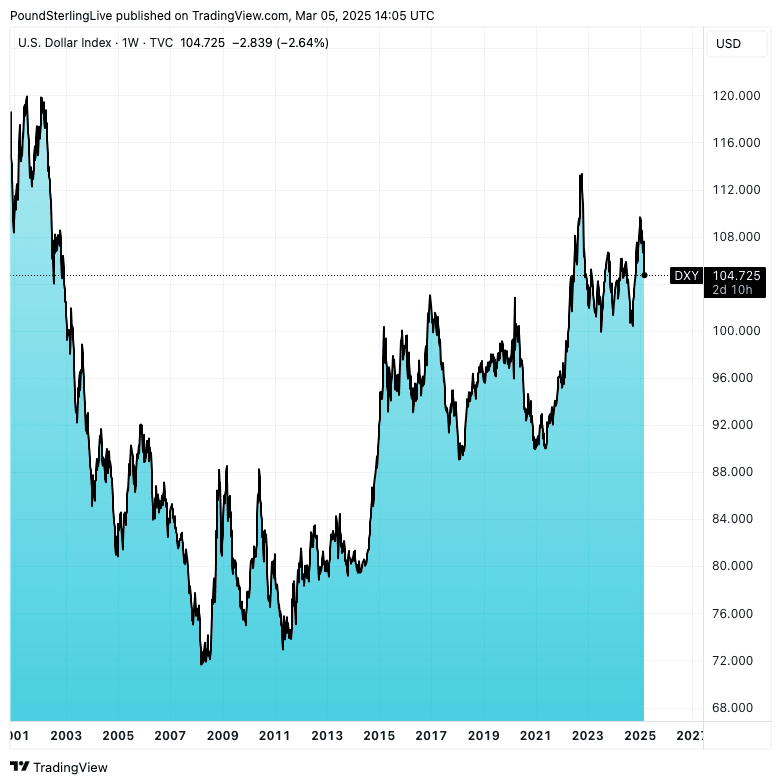
Image © Deutsche Bank
George Saravelos, lead FX strategist at Deutsche Bank, says the Dollar's slump following Tuesday's tariff announcement by Donald Trump was not something he would have expected at the start of the year.
Although the move has caught markets and analysts by surprise, he thinks we should not dismiss the developments.
He explains that two mutually reinforcing themes have been building in recent weeks:
Firstly, the tightening of the U.S. fiscal stance - i.e., less spending and no new tax breaks - and the broader rise in U.S. uncertainty are proving to be major drivers.
He explains that a tariff is effectively a tax on consumers, which is a headwind to growth by nature. Despite this, the U.S. administration is not offering any offsetting measures, such as tax cuts elsewhere or spending increases.
"Even more crucially, well-established measures of policy uncertainty are now rising more in the U.S. than the rest of the world. This is reflective of the broader-based policy disruption and unpredictability from the administration, most notably trade policy and DOGE spending cuts," says Saravelos.
This has led markets to start betting on more by way of Federal Reserve interest rate cuts. All else being equal, this is a traditional negative for the USD.
But Saravelos says there is more going on: the potential loss of the dollar's safe-haven status.
"We do not write this lightly," he clarifies. "The speed and scale of global shifts is so rapid that this needs to be acknowledged as a possibility. We highlight a few developments since the start of the year, providing tentative signs in this direction."

Above: The USD is still highly valued on a mult-year basis.
One sign is the declining correlation between the U.S. dollar and stocks, "which has been at the core of portfolio construction for many real money investors over the last decade," he says.
In addition, there's an unusual and simultaneous outperformance of both high and low beta currencies against the Dollar, i.e. everything else is rising, and Saravelos says the common denominator is the USD's overvaluation.
Deutsche Bank's analyst also points out that the U.S. current account deficit has breached the 4% threshold, "which has historically marked the limits of dollar overvaluation."
"Bringing it all together, we are starting to become more open-minded to the prospects of a broader weaker trend unfolding," says Saravelos.
